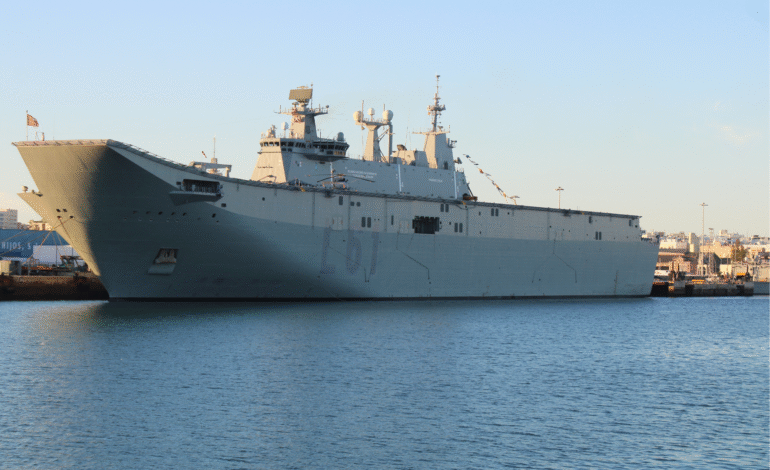Europe’s First CO2 Carrier Nears Completion for Climate Mitigation

As the world intensifies its efforts to combat climate change, carbon capture and storage (CCS) is emerging as one of the most promising technologies for mitigating carbon dioxide (CO2) emissions. A significant milestone in this pursuit has been reached with the creation of Europe’s first CO2 carrier, a pioneering vessel designed to transport liquefied CO2 from onshore capture sites to offshore storage locations. This development is crucial in supporting Europe’s ambitious climate goals and marks a major step toward establishing a scalable CCS infrastructure. With the carrier nearing completion, it is set to play a vital role in Project Greensand, an initiative that aims to reduce CO2 emissions and contribute to Europe’s target of net-zero emissions by 2050.
The CO2 Carrier’s Role in Mitigating Climate Change
The urgency to tackle climate change is ever-increasing, with CO2 emissions being a major contributor to global warming. The need to reduce these emissions has spurred various efforts, including the development of carbon capture and storage technology. CCS involves capturing CO2 at its emission source and safely storing it underground or beneath the seabed, preventing it from re-entering the atmosphere.
The CO2 carrier plays a critical role in this process by providing a solution for transporting captured CO2 from industrial sites, often located inland, to offshore storage facilities. Many CO2 capture projects are situated far from suitable storage locations, and shipping the captured carbon to designated sites via sea becomes a necessary and efficient method of transportation. The carrier allows for the safe and reliable transfer of CO2 from land-based capture sites to storage reservoirs in the North Sea, helping to address this logistical challenge and move Europe closer to meeting its climate targets.
The INEOS CO2 Carrier: A Landmark Achievement
The INEOS CO2 carrier, under construction at the Royal Niestern Sander shipyard in the Netherlands, represents a significant achievement for both the maritime and energy industries in Europe. This vessel is set to become the first of its kind in the region, marking a critical step in the development of CCS infrastructure within the EU. The ship’s construction is led by INEOS Energy Europe, with the goal of establishing the first full-scale CO2 storage facility in the EU.
Mads Gade, CEO of INEOS Energy Europe, emphasized that completing all sections of the CO2 vessel is a monumental step forward for CO2 transportation within the EU. This vessel is integral to the ambition of building the first full-scale CO2 storage facility in the European Union. With the hull of the ship now completed, the project enters its next phase, which includes retrofitting, commissioning, testing, and sea trials before the carrier enters regular service.
Project Greensand and Its Significance
Project Greensand is the initiative behind the development of Europe’s first operational CO2 storage facility. Located in the Danish part of the North Sea, the project aims to safely store CO2 by injecting it into deep reservoirs beneath the seabed. This underground storage will prevent the CO2 from escaping into the atmosphere, helping to mitigate the environmental effects of emissions. The CO2 carrier is essential to the project, transporting liquefied CO2 from land-based capture sites to these offshore storage facilities.
The Greensand project will inject CO2 into the Nini reservoir, located 1,800 meters (5,905 feet) beneath the seabed. This geological formation has been identified as a suitable and secure location for long-term CO2 storage, making it an ideal site for mitigating climate change. The carrier will regularly transport liquefied CO2 from the Port Esbjerg in Denmark to the Nini West platform, where it will be safely stored.
Greensand’s significance extends beyond environmental considerations. As Europe’s first full-scale CCS project, it will offer valuable insights into the scalability and feasibility of CCS technologies, which are expected to be key in Europe’s decarbonization strategy. By safely storing CO2, the project not only addresses emissions but also contributes to the region’s broader goal of achieving net-zero emissions by 2050.
The Role of the Maritime Industry in the Energy Transition
The successful construction of the CO2 carrier underscores the important contribution of the maritime industry in supporting the global energy transition. The North Netherlands maritime sector has played a key role in the development of the carrier, with companies like Wagenborg Offshore providing vital support for the project.
Edwin de Vries, Director of Wagenborg Offshore, highlighted that the completion of the CO2 carrier demonstrates the potential of the maritime sector to contribute to the energy transition. This project serves as a prime example of how the maritime industry can support sustainable energy solutions, particularly in the context of carbon capture and storage. As construction continues, the progress of this initiative reflects the growing role of the maritime industry in shaping Europe’s energy future.
Collaboration and Investment in CO2 Storage
The development of the CO2 carrier is part of the larger Project Greensand, a collaboration among INEOS, Harbour Energy, and Nordsøfonden. This partnership aims to establish a secure and efficient method of CO2 storage in the North Sea, furthering Europe’s efforts to reduce emissions and meet climate goals. The agreement to build the CO2 carrier was signed in November 2024, and in December 2024, the project reached a critical milestone with the final investment decision (FID) to proceed with full-scale CO2 storage in the Nini Field.
This decision marks the beginning of a significant investment in the CCS value chain, with over DKK 1 billion (approximately $151.4 million) being allocated to enhance storage capacity and support the scaling up of the project. The initial phase of Project Greensand aims to store 400,000 tonnes of CO2 annually, with potential for growth to 8 million tonnes per year by 2030. These investments will help ensure that the project remains on track and can expand its capacity to store more CO2 in the coming years.
The Potential for Global Impact and Scalability
While Project Greensand is based in the EU, its impact is likely to extend far beyond Europe. The success of CCS technologies in the North Sea could serve as a model for other regions with significant industrial CO2 emissions, offering valuable lessons for similar projects worldwide. As the global community continues to address the climate crisis, the implementation of successful CCS projects will be crucial in achieving global carbon reduction targets.
In addition to its environmental benefits, the growth of the CCS sector is expected to bring about substantial economic opportunities. The development of the CO2 carrier and the broader Project Greensand will create jobs in both the maritime and energy sectors, as well as stimulate innovation in new technologies that can be applied worldwide. The scalability of the CCS model could inspire similar initiatives in other parts of the world, helping to drive global efforts to combat climate change.
The Future of the CO2 Carrier and Project Greensand
As the CO2 carrier nears completion, it moves closer to playing an integral role in Project Greensand. The next steps in the carrier’s development, including retrofitting, testing, and sea trials, will be critical in ensuring its readiness for service. Once operational, the carrier will begin transporting liquefied CO2 from land-based capture sites to the Nini reservoir in the North Sea, where it will be safely stored.
Looking ahead, the success of Project Greensand and the CO2 carrier will be crucial in helping Denmark and the broader European Union meet their climate goals. The safe and permanent storage of CO2 in the North Sea will contribute to Europe’s efforts to reduce its carbon footprint and transition to a low-carbon economy. As the world continues to face the challenges posed by climate change, projects like Greensand will be vital in ensuring a sustainable future for future generations.
A Key Milestone in Europe’s Fight Against Climate Change
Europe’s first CO2 carrier is a groundbreaking development that highlights the importance of innovation, collaboration, and commitment in addressing the global climate crisis. By enabling the transportation of CO2 from industrial capture sites to offshore storage locations, the carrier will play a crucial role in Project Greensand, which is set to become Europe’s first operational CO2 storage facility. The success of this initiative demonstrates the power of public-private partnerships and the growing role of the maritime industry in supporting the energy transition. As construction progresses and the carrier prepares for full-scale operation, the project represents a significant step forward in Europe’s efforts to combat climate change and build a more sustainable, resilient future.







